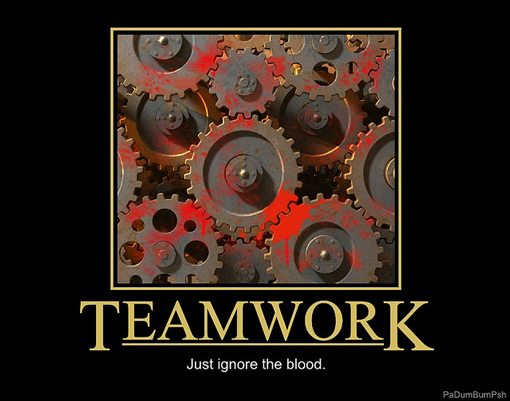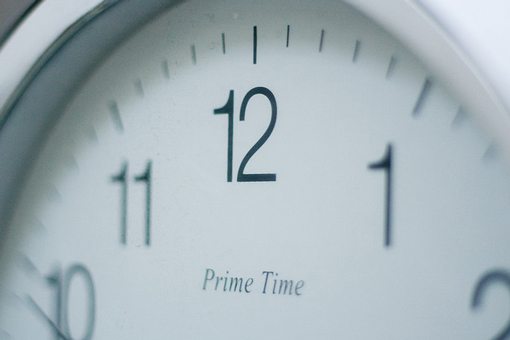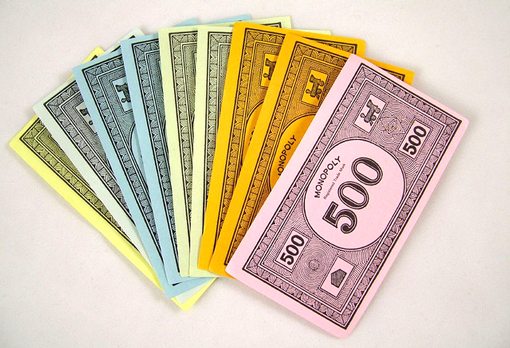Freelancer or FTE? 10 Questions to Ask Yourself Before Deciding
As a designer, you have a much higher likelihood of confronting the freelancer vs. full-time employee dilemma than most people. No matter which side you’re currently on or have been on before, there are several key questions that you should ask yourself before deciding where you fit in best.
Below we’ll take a look at ten such questions that you can use to assess your career aspirations and long-term goals. We’ll also offer tons of advice along the way about how to interpret your answers to each question.
2 Million+ Digital Assets, With Unlimited Downloads
Get unlimited downloads of 2 million+ design resources, themes, templates, photos, graphics and more. Envato Elements starts at $16 per month, and is the best creative subscription we've ever seen.
This article is part three of a four-part series on how to improve your small business or freelance operation. We’ll cover everything from time-saving tools to earning extra money and even deciding on the best career path. Brought to you in partnership with Heart Internet Reseller Hosting.
1. Do You Enjoy Business As Much As Design?
This question is absolutely critical to whether or not you will experience long-term success as a freelancer. Interestingly enough, I think many freelancers have a completely backwards view of what their answer to this question means.
Many people assume that the propensity towards enjoying the business world means that you’re bound for a corporate desk. Wearing a suit, carrying around pens for math instead of pencils for sketching and kissing up to the boss are all “business” activities that drive people to freelancing and away from standard full-time employment.
However, far more important than these considerations is that fact that being a freelancer means that you have to learn how to run your own business (even if it’s just a one man/woman operation). Sure, you can fly by for a few years without any real knowledge of how to run a business, but sooner or later it will catch up to you.
How Do Freelancers Engage in Business Activities?
Being a freelancer means understanding your local and federal tax laws, studying and choosing a declaration that’s right for your business (independent contractor, LLC, etc.), filling out paperwork, figuring out a marketing plan, scheduling meetings with clients and tons of other activities that have nothing to do with design.
If you’re the kind of person that shuns the thought of so much boring extra work, freelancing might not be right for you. Having a full-time job often means that you can simply forget about all this stuff. The company you work for will take care of many or all of the business activities and you can focus most of your attention on what you’re good at: design.
2. How Self-Driven Are You?
This question is fairly straightforward and you can no doubt judge the outcome properly: if you’re not very self-driven, then you probably shouldn’t be a freelancer. You already knew this, so big deal right?
The problem that accompanies this question is a dishonest assessment of just how self-driven you are. I’ll bet 9 out of 10 people asked this question would say that they are very self-driven, but let’s face it, there’s no way 90% of the population really is that motivated.
It’s often a good idea to test yourself so you can really get some insight into the question. As an exercise, find something that you’ve always wanted to learn, make sure it’s something you can learn sitting at your desk though: html, css, PHP, the ins and out of screen printing; anything that can be thoroughly learned online. Now lock yourself away in a room (alone) for three hours and try to learn as much as possible about it. While you’re researching, think about how no one is really forcing you to do this. Think about the games you could be playing, open up a Twitter client and try to resist looking at it and consider how long it’s been since you checked Facebook.
At the end of the three hours, go over how much you really accomplished. How much did you get done when no one was there to push you? Were you completely dedicated, mildly distracted (don’t worry, even the best freelancers get a little distracted), or was the entire three hours a waste of time because you simply couldn’t focus on the task at hand?
This is a decent simulation of what it’s like to be a freelancer (only worse because you often don’t actually want to do the work you need to). As annoying as it is to have a boss looking over your shoulder, some people simply need that accountability to be productive. There’s nothing wrong with needing it, you just have to be honest and admit to yourself that when no one is driving you, it’s difficult or impossible to get anything done. In this case, a full-time employee gig might be the way to go.
However, for many people, the kind of quiet, personal environment described above is exactly where they thrive. The workplace is a busy, distracting place and can wreak havoc on concentration far more than Facebook. If you’re nodding your head in agreement, freelancing just might be for you.
3. How Do You Respond to Feedback?
This answer to this question is difficult to interpret. The truth is, both freelancer and FTE designers have to endure a lot of feedback, the key difference lies in who it comes from.
Freelancers often deal directly with clients and therefore must be able to handle requests made by someone not always qualified to give them. Your beautiful designs will be ruined by clients and you have to learn to smile and accept it because they’re paying you to. I personally know freelancers who freak out when clients request even reasonable changes. This is a great way to run your business into the ground because you’ve scared off all of your clients.
However, the great thing about being a freelancer is that you do in fact have a lot of freedom over who you choose to work for and what you choose to provide. Some clients will make lofty demands and sling harsh criticisms as if they own you, and you can ditch them when they do. Firing an abusive client when he’s just one of many is a lot easier than quitting a job you depend on to pay your mortgage.
The Other Side
In the corporate world, there’s often (though certainly not always) that buffer between clients and designers known as “management.” This has positive and negative sides. If you have a good manager, they take on all of the annoying client hassles and discussions and sift through complicated feedback to find points that will genuinely make the creative better. A bad manager on the other hand, is just a link in a chain.
The bigger the company is, the worse this situation becomes. I know first hand that large marketing firms have so much bureaucracy and red tape that it can drive a person to madness. There are often multiple levels of designers, brand managers and account managers on both the marketing company and the client side. It can literally take months of frequent and redundant changes to get a single page of creative approved.
The point is, to be a successful FTE designer, you have to be prepared for indirect feedback and lots of it. To be a freelance designer, you still have to be prepared for feedback, but it’s directly from the client (which is both a pro and a con in different situations).
4. Do You Enjoy Teamwork?
All this talk of bureaucracy brings me to my next subject: teamwork. Teamwork is a huge topic studied and implemented thoroughly in business schools in an to attempt to convince you that it’s simply the best way to accomplish large tasks. The question is, did you buy what they were selling?
Some people absolutely thrive in a team environment. I have an aunt who manages a team of designers and she absolutely loves the entire team experience. The sharing of knowledge and ideas, the mutual encouragement, the camaraderie; she wouldn’t trade it for the world.
I’m the opposite. In college, a “group project” meant getting stuck with a bunch of procrastinating slackers who brought my grade down. I learned this quickly so “group project” eventually came to mean everyone in the group simply thanked me for doing all the work and getting them an A.
This persisted on through adulthood. When I’m in a team larger than two people I can’t help but mourn the inefficiencies of the system and wish that everyone would stop holding pointless meetings so I could actually get some real work done.
The point is, both of these views have their strong points. It all comes down to how you work best. If it’s in a team environment, you might be miserable working at home alone. If it’s alone, you’ll probably hate working 9-5 as a small cog in a big machine.
5. How Are Your Communication Skills?
This may sound oddly similar to the teamwork question, but it’s important to note the differences. You definitely need great communication skills in a corporate team environment, but running your own business, discussing projects with clients and winning new work involves never-ceasing communication that you depend on to survive.
In a team, you can be that quiet guy who puts his head down and works away tirelessly and thanklessly. You still get a paycheck and hopefully your boss realizes your value even if he/she doesn’t tell you so. When you’re a one-man show things are drastically different. If you’re quiet, you lose clients. If you can’t communicate complex ideas into words, you lose clients. If your best and brightest mood still sounds a little cranky, you lose clients.
Obviously, there’s a trend here. If you’re not the best communicator, freelancing might be a bumpy road.
6. How Do You Feel About a 40 Hour Work Week?
One of the strongest benefits I’ve seen in a “real job” is that fact that it is often the case that you can enjoy a fairly normal work week. Designers are definitely prone to burn the midnight oil so there are plenty of you FTEs who blow away your 40 per week but for the most part, a standard schedule applies.
This is of course, a great perk. You can actually plan your life, take your wife out to dinner in the evening, have family trips on the weekends; great stuff! As a freelancer, you’d think that you’d have all this freedom and more. Working from home means you can likely work from anywhere, so impromptu vacations are entirely possible.
The problem is, working from home “means you can work from anywhere.” Any time, any place, it’s all a potential work environment. Don’t kid yourself into thinking you’ll have these great hours. Email a few freelance designers at midnight and see if you get a quick response. You often will, because they’re still at their desks!
I love the freedom that I enjoy as a freelancer. But I also can’t help but work on the weekends and even when I travel to Missouri to visit my family for Christmas. I often can’t help but think how nice it would be to put in a set number of hours per week and just enjoy the time I spend outside of work.
This is one of the most important questions on the list if you have a family. You should definitely sit down with your spouse and decide which scenario will work better for your situation. Working strange hours inevitably interferes with the other roles you’re expected to play in life and if you’re not an awesome juggler, steady full-time employment might be a much safer bet.
7. Have You Compared All of The Compensation Variables?
Last year I embarked on my own personal journey to decide between becoming an FTE and staying a freelancer. I instantly realized that it seemed like my skill set was worth a lot less in the full-time world than the freelance world.
However, as a freelancer on my own I don’t get access to a group insurance plan, there’s no such thing as a “paid vacation,” the idea of a sick day is laughable and my tax rate is significantly higher. Further, I have to provide my own equipment and as you know, Apple and Adobe don’t exactly make it easy.
Once I took all of the extra expenses into account and compared them with the benefits of a “real job,” that cubicle started looking better and better.
8. Are You Financially Stable?
This one is simple to understand for anyone faced with the opportunity to dive into freelancing. The first thing you’re likely to think about is the risk involved and whether or not you can handle it.
Freelance design is a “feast and famine” business. You could legitimately fall flat on your face and not earn a dime on your own. Alternatively, you could have one amazing client that pays your bills for years only to drastically cut the workload in a rough economic year, leaving you scrambling for extra income. Obviously, the best scenario is to have a diverse and steady stream of clients but that is certainly not an easy goal to achieve.
If you’re thinking about leaving your job to become a freelancer, make sure you’ve got a nice mound of savings that you don’t mind living off of if things go south. You don’t want to end up at your parents doorstep begging for money.
9. Do You Have a Backup Plan?
This one ties right into the previous question. The basic idea is to plan for failure. Don’t expect it, have confidence in yourself and don’t underestimate your worth, but don’t be dumb enough to push all your chips in on one bet.
This goes for both the full-timer transitioning to freelancing and the freelancer transitioning to a 9-5. Realize that with changes come uncertainty and that merely thinking happy thoughts and avoiding a contingency won’t do a bit of good if everything falls apart.
My best advice here is to not burn bridges when you leave wherever it is that you’re leaving. Make sure your old boss or your old clients are going to miss you when you’re gone. Quitting a job is perceived far differently than moving on to greater opportunities. If you’re perceived to be doing the latter, you might just be able to go back if your plan fails!
10. What Are Your Career Goals?
My last question is the most vital from a personal sense. Forget what people expect of you and how much money you will and won’t make. Ask yourself simply what you want out of your career.
I am a firm believer in the fairy tale of loving what you do for a living. I believe in it because I’ve loved every job I’ve ever held for a substantial period of time. After a very brief stint as a McDonald’s burger cook, I realized that working a job that you hate is simply no way to spend your life. Short-term, it’s often necessary to pay the bills, but it’s up to you to make sure short-term doesn’t turn into long-term.
Sometimes you find yourself sitting at a desk that someone else owns in a building someone else owns, looking down a long path that leads to a future of you being owned by someone else. Conversely, sometimes you find yourself sitting at your own desk in your own house, realizing that in twenty years you’ll be in the exact same place, doing the exact same thing.
Both of these realizations can be scary. Make sure that you take the time to slow down and decide what you want out of life and what path is most likely to take you there. If you dream of corner offices, fancy dinners and feeling important, maybe it’s time to stop freelancing to pursue a high level art director position. If you dream of being your own boss, working when and how you want and having the freedom to take the kids to Disneyland in the summer without asking a single person for a few days off, maybe it’s time to give up the corporate gig and boldly embark on your freelance journey.
Conclusion
Keep in mind that these two categories aren’t mutually exclusive, you can in fact split your time between a steady job and freelance work. In fact, that might be the best strategy possible!
The point of this lengthy discussion was merely to get you thinking about where you will thrive in your career. Sometimes we look at the other side of the fence longingly, so sure that the grass is greener, only to hop the fence and find a land more barren than our original position. Both freelancing and full-time employment have their ups and downs. Make sure you’re aware of them before deciding which you think is better for you.
Leave a comment below and let us know if you’re a freelancer or an FTE along with your opinion of which is better for you!






